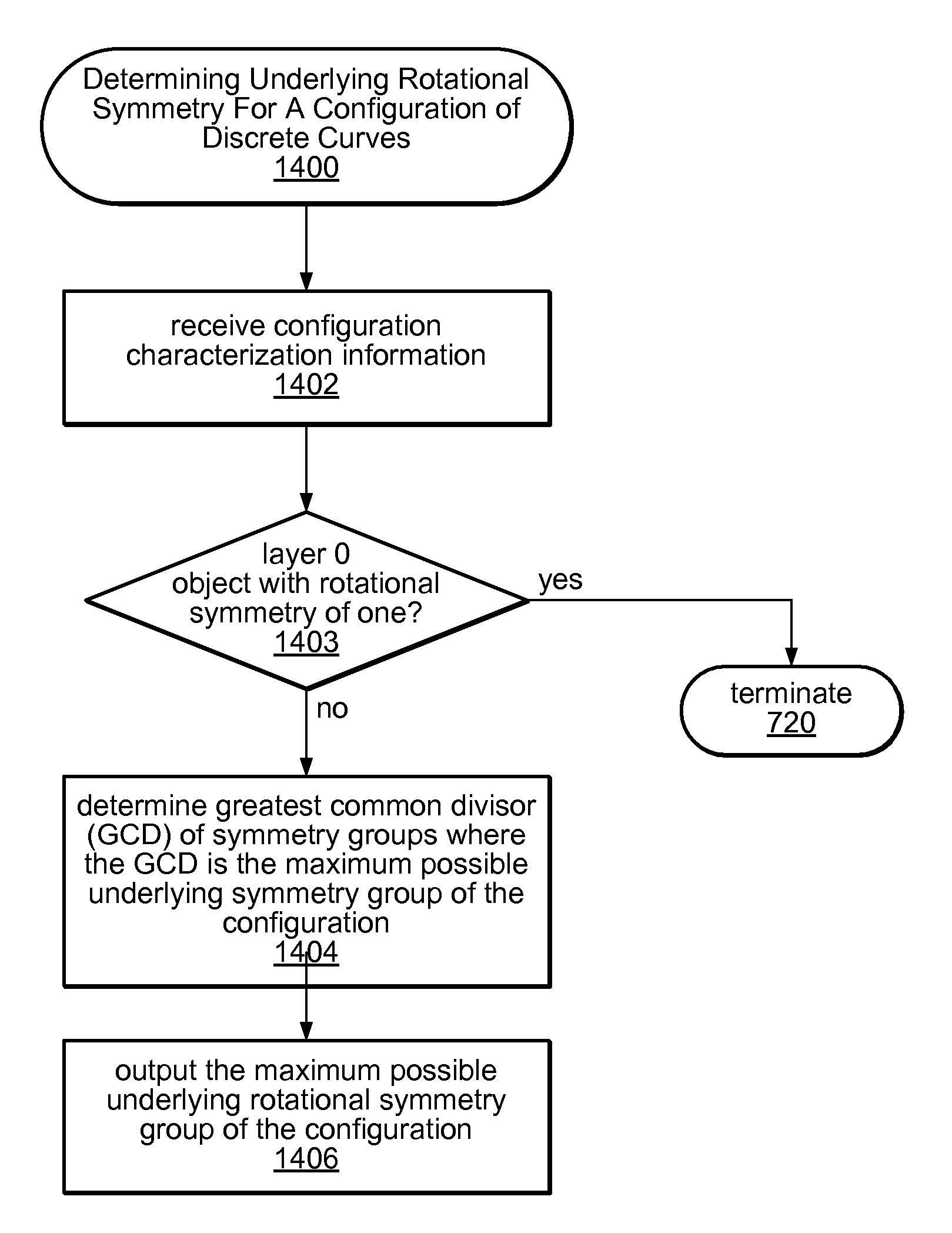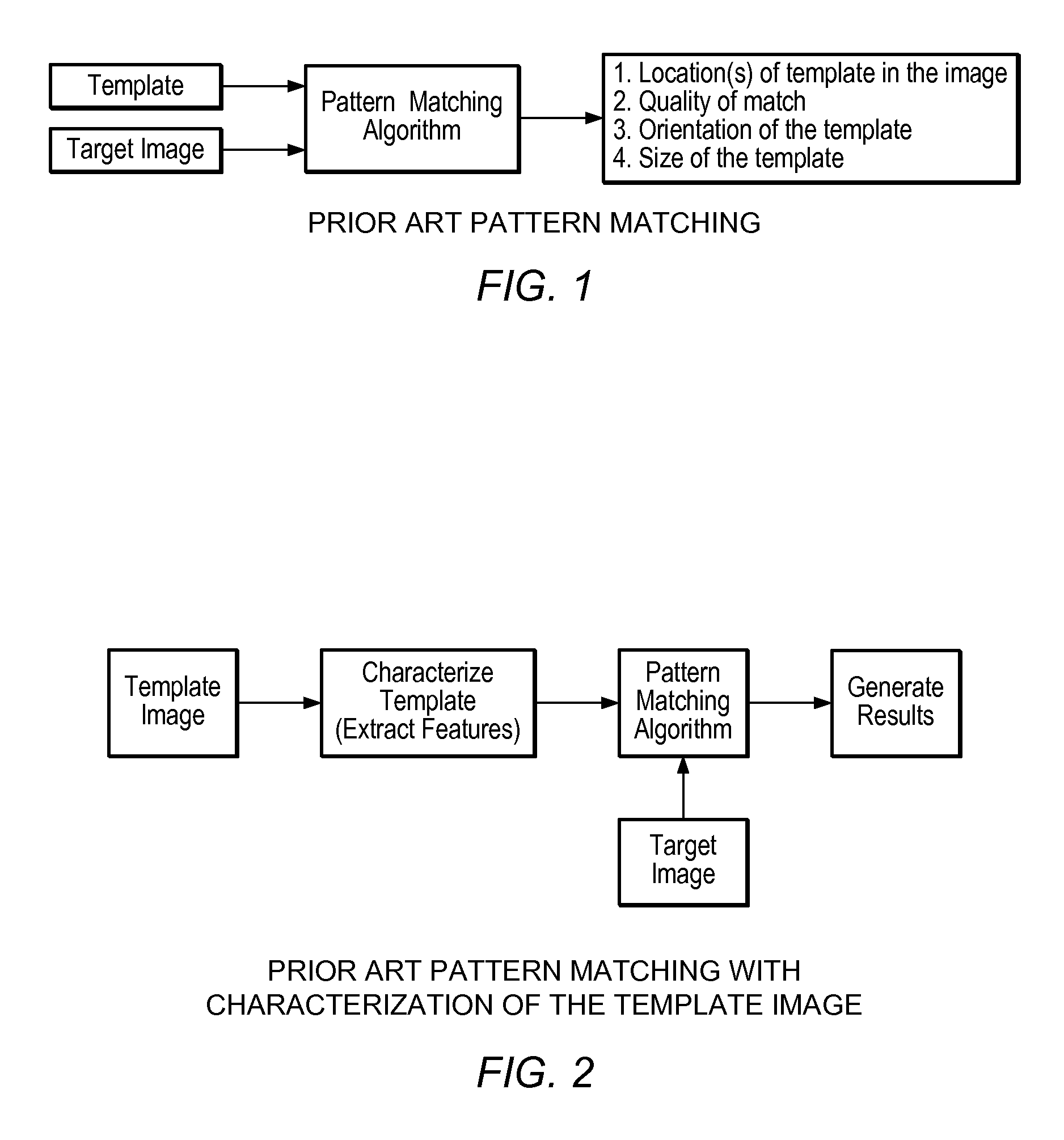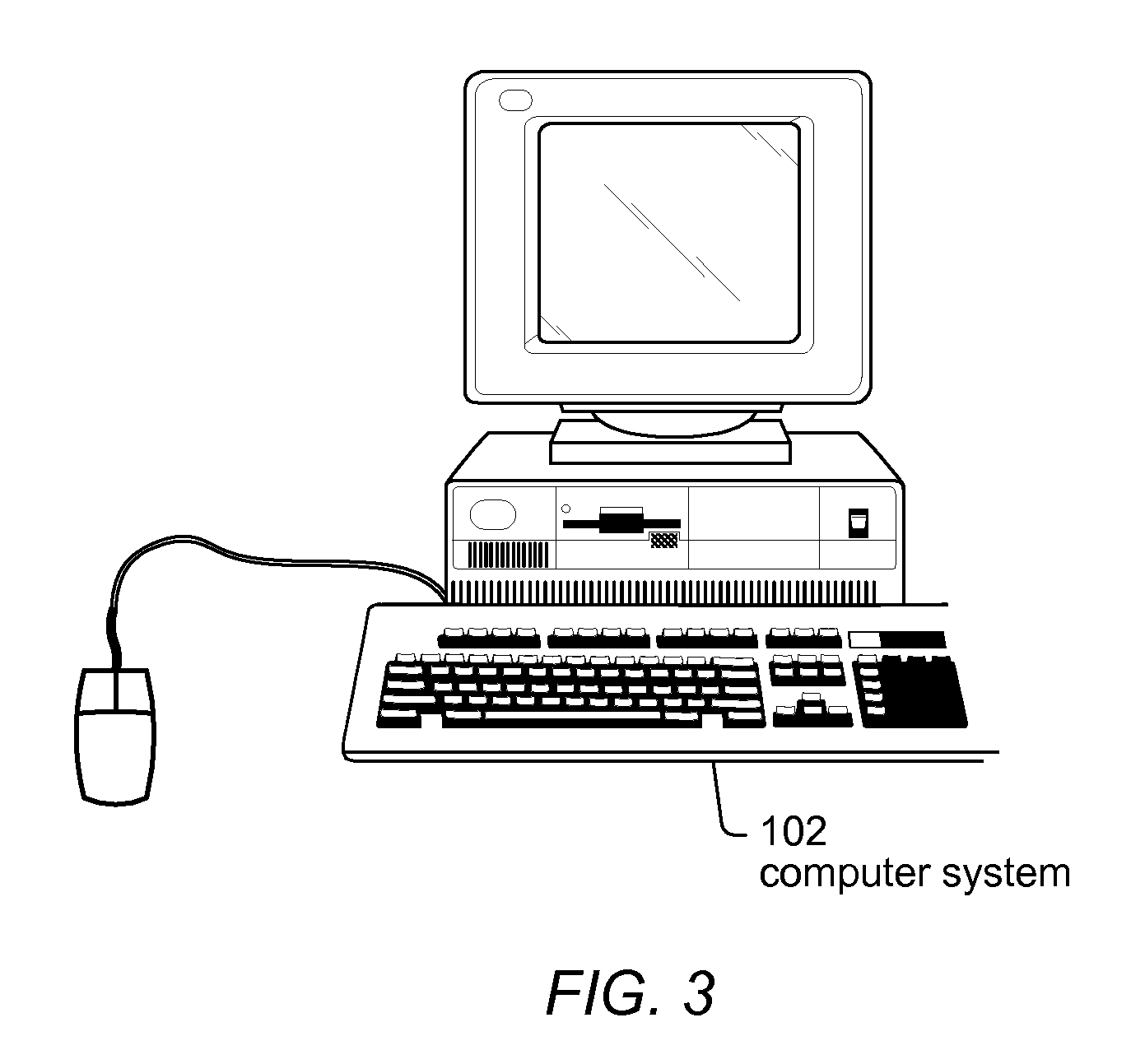Mutual symmetry detection
a symmetry detection and multi-symmetric technology, applied in the field of geometric pattern matching, can solve the problems of difficult to distinguish correlations between rotated and/or reflected versions, high computational cost, and high computational cost of current methods for determining such symmetry
- Summary
- Abstract
- Description
- Claims
- Application Information
AI Technical Summary
Benefits of technology
Problems solved by technology
Method used
Image
Examples
Embodiment Construction
Incorporation by Reference
[0076]The following patent applications are hereby incorporated by reference in their entirety as though fully and completely set forth herein:
[0077]U.S. application Ser. No. 10 / 455,141, titled “Discrete Curve Symmetry Detection”, filed Jun. 5, 2003.
[0078]U.S. patent application Ser. No. 10 / 263,560 titled “Pattern Matching System Utilizing Discrete Curve Matching with a Mapping Operator”, filed Oct. 3, 2002, and which issued as U.S. Pat. No. 7,171,048 on Jan. 30, 2007.
[0079]U.S. patent application Ser. No. 10 / 454,940, titled “Rotational Symmetry Detection for Configurations of Discrete Curves”, filed Jun. 5, 2003, and which issued as U.S. Pat. No. 7,212,673 on Jan. 30, 2007.
[0080]The following publications are hereby incorporated by reference in their entirety as though fully and completely set forth herein:
[0081]The National Instruments IMAQ™ IMAQ Vision Concepts Manual; and
[0082]“Efficient Matching Of Discrete Curves”, by Lothar Wenzel, National Instrumen...
PUM
 Login to View More
Login to View More Abstract
Description
Claims
Application Information
 Login to View More
Login to View More - R&D
- Intellectual Property
- Life Sciences
- Materials
- Tech Scout
- Unparalleled Data Quality
- Higher Quality Content
- 60% Fewer Hallucinations
Browse by: Latest US Patents, China's latest patents, Technical Efficacy Thesaurus, Application Domain, Technology Topic, Popular Technical Reports.
© 2025 PatSnap. All rights reserved.Legal|Privacy policy|Modern Slavery Act Transparency Statement|Sitemap|About US| Contact US: help@patsnap.com



